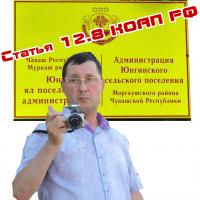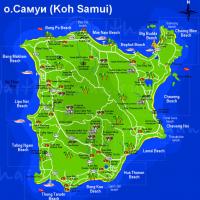Patchwork project for the kitchen. Creative project. Topic: "Patchwork (potholder)". technology project (grade 5) on the topic. using active teaching methods
https://accounts.google.com
Slide captions:
TECHNOLOGY of patchwork sewing Prepared by the teacher of technology MBOU secondary school №14, village Ilskiy A.V. Arinushkina
Blanket "Sundial", England 1797 Patchwork, from the English. patchwork - "a blanket, a bedspread, a product made of multi-colored patches") HISTORY OF PATCH SEWING
The history of patchwork sewing in Russia In our country, mentions of this technique have been found since the 19th century, when expensive overseas chintz went on sale. This art reached its heyday at the end of the 19th century, which is associated with the beginning of the development of the production of calico by machine in factories and the widespread distribution of inexpensive printed cotton fabrics. Thus, in our country, the whole history of patchwork sewing is briefly reduced to the emergence of industrial production in the textile sector.
Different names for one work. Patchwork - translated from English "patchwork". Quilt is a quilt. Textile colla w - translated from French - gluing. Textile mosaic is an ornament made of separate patches fitted to each other.
The workplace when performing patchwork sewing is divided into 3 zones: Table with tools, fixtures, materials; - Sewing machine; - Ironing board. It is convenient when tools and accessories are located to the right hand of the worker, and materials to the left. The tools should be stored in a working box. A folder is needed for templates and pictures. During operation, the light should fall from the left side or from the front. During work, you need to sit straight, on the entire surface of the chair, slightly tilting the body and head forward. The product should be located at a distance of 30 - 40 cm from the eyes of the worker.
Store needles and pins in a needle box. Do not put the needle in your mouth, do not play with the needle. Push the needle into the fabric with the thimble. Watch your fingers while working. Do not play with scissors, do not bring them to your face. Use scissors as directed.
Materials For the base, it is better to use a thick cotton fabric, such as piping or burlap. Most of the traditional patchwork is made from printed fabrics. Beginners are advised to use a medium weight 100% cotton fabric. It is easy to work with and does not wear out as quickly as loose fabric. In the future, you can use fabrics of different textures, combining them with each other and thereby creating stunning products.
Additional materials for the manufacture of products: Non-woven, flizofix - can be with or without an adhesive coating. Used to seal the top of products. Synthepom - used for laying inside when sewing blankets and other products.
Preparing the fabric for use Wash, strip and iron old items. The new fabric must be decorated (wet heat treatment). Wrap woolen and silk fabrics for decorating in a damp towel for 3-4 hours, and then iron. Check the fabric for durability by pressing the edge of the fabric through a damp cloth. If a trace remains on it, then the dye is fragile and must be fixed by soaking the fabric in water with the addition of vinegar.
Harmonious combination of contrasting colors
PRODUCTION OF A PATTERN A template is a pattern by which any identical products are made (German word). A patchwork pattern consists of several types of repeating elements. Elements of the same kind have the same shape and size. To cut out the elements, use a template made of thick paper or cardboard.
Patchwork is a pleasure and beauty.
Patchwork paintings
How do professionals in patchwork technique work?
Preview:
To use the preview of presentations, create yourself a Google account (account) and log into it: https://accounts.google.com
Slide captions:
TECHNIQUE of patchwork sewing (CONTINUED) Prepared by the teacher of technology MBOU SOSH №14 village Ilskogo A.V. Arinushkina
Technique "Square" One of the oldest patchwork techniques is based on working with pieces of fabric of the simplest geometric shape - a square.
Technique "Triangles" Most often used shreds in the form of right-angled triangles. Cut diagonally, unfold and iron.
“Russian square”, “Ohio star”, “mill”, “card trick”, “rose” or crazy quilt. It is believed that Russian needlewomen were especially fond of this technique. Sometimes in a modest village hut, the only decoration was a colored blanket sewn from many triangles. Technique "Triangles"
"Well", "pineapple", "felling", "ladder of justice", "chevron", "log hut", "parquet", "American square", "labyrinth". The product consists of strips of various fabrics. This technique is called quilting in English. SEWING TECHNIQUE FROM STRIPES.
Technique "Corners" The peculiarity of this technique is that the shreds are not stitched together, but after making a separate corner from each, they are stitched in rows onto the base.
Templates A template is a sample made of cardboard, tracing paper, according to which any details are cut. Patchwork patterns are the same as sewing patterns for clothing. They can be of various shapes and sizes: square, triangular, diamond-shaped. They are made from durable materials: thick cardboard, plastic, plexiglass.
Types of templates depend on the picture POLYGONS RECTANGLES "well" "square"
"American Square" ROMBAS
hexagons TRIANGLES "SQUARE IN SQUARE" FLORAL PATTERNS OR "COMBONS" "mill"
"STAR"
DETAILS WITH CIRCLES
Methods for finishing patchwork
Methods for processing the edges of the product. 1. Fold-over seam with a closed cut Edge overlapping with bias tape. You can cut it yourself or buy it ready-made, picking it up by color.
1. Problem situation.
- I have already familiarized myself with the technology of hand and machine sewing. And so I decided to sew myself an oven mitt.
How can I do it?

2. Research.
- 1. What products are needed in the kitchen?
- Towel, napkins, potholders, chair cushions, hot stand.
- 2. What is difficult to buy in a store?
- Chair cushions, because the shape of the seat is individual for each type of chair.
- 3. How many chairs will there be in our kitchen?
- 4 chairs.
- 4.What kind of fabric should be sewn for kitchen products?
- The fabric should be well washed, not lose its shape, and not shrink.
- 5. What colors prevail in the kitchen?
- Dark green, brown.

- 6. What advice do my parents give me?
- My mother says I need to sew a small product. She is afraid that I will not be in time.
- 7. Who will help me in my work?
- Mom agreed to help me, as she loves to sew.
- 8.What can be sewn?
- I will put forward product ideas and choose the best one.

3. Initial ideas.
I decided to choose an oven mitt.
Chair cushions
Plate napkins
Potholders

4. Requirements for the product
- 1) Available manufacturing technology.
- 2) Low fabric consumption.
- 3) Simple design.
- 4) Fast to manufacture.
- 5) It is necessary in everyday life.
- 6) Compliance with the colors of the kitchen.
- 7) Made from natural fabric.
- 8) Beautiful, bright colors.

5. Choosing the best idea
- For a better choice, I made a table.

Which shape to choose?
- I decided to choose a square one because it is easier to make.
Rectangle

What size will the potholders be?
- As I chose a square potholder, it is measured in centimeters.

Choosing the right fabric
I chose chintz fabric as it is easy to sew.

Selection of additional materials
Materials for gaskets
- I chose the sentepon as it is lightweight and protects the hands from burns.
Sintepon

- I chose a chintz fabric, it sews well and comes in different colors.
Lining material

Calculation of materials and cash costs
- For the potholder, I needed 2 chintz fabric and 1 sentepon.
Material
number
Price per unit The cost
Calico fabric scraps
Sintepon 20 cm 0 -
Cotton fabric scraps 12 cm 0 -
Sintepon 40 cm 0 -
Threads 3 spools 0 -

Tack making technology
- 1.Cut a 12 cm square out of the fabric.
- 2. Sew the squares together.
- 3. Iron the seams of the upper part.
- 4. Connect the upper part of the tack with padding polyester with a sweeping stitching.
- 5.Cut the bottom of the tack.
- 6.Sweak off the top of the tack, sew on the machine, leaving room for turning out
- 7.Turn out.

- 8. Cut and sew the eyelet.
- 9. Sweep the potholder at the seams of a hundred, lay a line. (Quilt).
- 10.Insert the eyelet into the tack and sew.


Source of information during project execution
- 1. Textbook “Technology. Housekeeping technology ".
- 2. Internet resources.

project
"Patchwork for the kitchen"
To view a presentation with pictures, artwork, and slides, download its file and open it in PowerPoint on your computer.
Presentation slides text content: Patchwork sewing. Grade 5 Prepared by: Godzelya Zinaida Ivanovna MBOU "School No. 16" Art. Geymanovskaya, Tbilisi district 2016 Good morning!
ppt_yppt_yppt_y
r
style.rotation
Patchwork for the kitchen - dining room
style.rotation
style.rotation
style.rotation
Congratulations! Kuban handicrafts Different names of one work. patchwork - in European, quilting - in American, and in Russian - patchwork ... Patchwork has been known in Russia as one of the most interesting types of home handicrafts for a long time. But as a professional art of working with a patch (from the English pachwork - patchwork), it began to revive only in the late 60s. XX century
style.rotation
The work is carried out manually (with a needle-forward stitch, chain stitch, buttonhole stitch or blind stitch) or on a sewing machine (stitching stitch, zigzag stitch). In the technique of patchwork, you can make a variety of clothing and household items. Quilt (English quilt - "patchwork quilt"). The quilt technique is very old and almost forgotten. Interest in her reappeared in the 90s. XX century. In the USA, Europe, as well as Russia, quilt societies have been created, where projects are developed even at the state level. A society called International Cultural Contacts has been created in Russia, the purpose of which is to promote the development of the art of quilt in Russia. Quilt is a product made using the quilting technique, a variety of patchwork, which is usually complemented by a large number of the smallest stitches.
Types of ornament An ornament is a pattern consisting of rhythmically ordered elements. "Ornament" means decoration, pattern.
Organization of the workplace The workplace when performing patchwork is divided into 3 zones: Table with tools, devices, materials; - Sewing machine; - Ironing board. Convenient when tools and devices are located to the right of the worker, and materials - to the left. Tools should be stored in a working box. For templates and drawings you need a folder. During work, the light should fall from the left side or from the front. During work, you need to sit straight, on the entire surface of the chair, slightly tilting the body and head forward. The product should be at a distance of 30 - 40 see from the eyes of the worker. Tools and fixtures
Materials
Color combinationColor six-sector circleHarmony of the triadHarmonious combination of contrasting colors
SAFETY PRECAUTIONS When performing manual work: store needles in a specially designated place - a pad, a needle bed; sew with a thimble so as not to prick your finger; put scissors with closed blades on the right with the rings towards you; transfer the scissors with the rings forward. When working with an iron: before starting work it is necessary check the integrity of the cord; turn the iron on and off with dry hands, holding the socket with one hand and holding the plug with the other; place the iron on the stand; make sure that the sole of the hot iron does not touch the cord; set the temperature correctly (in accordance with the type fabric); after finishing work, place the iron on the stand and turn it off.
style.rotation
PRACTICAL WORK 1. Circle the required number of parts on the ironed fabric. 2. Cutting out details. We fold the blanks with the front side to each other and sew three sides. We turn it out, iron it out, make a loop, put it on the right place and sew on the side of the tack. 1. We start assembling the parts into strips of three. 2. Iron the stripes and sew them together. 3. Iron the square and cut out the lower part from the denser fabric. Reflection How did you discover new knowledge? What new knowledge did you discover today? Where can you apply this knowledge?
Well done! Thanks for the lesson! Style.colorfillcolorstroke.colorfill.type Sources used http://www.lenagold.ru/fon/tkan/losk.html Patchwork technique http://www.greenmama.ru/nid/733227/Patchwork - fashion accessories with your own hands Cooler Don "Patchwork sewing" - M .: OOO "TD" Publishing house Mir Knigi ", 2006 MA Kuzmina, MV Maximova "Patchwork" - CJSC "Publishing house" EKSMO - Press ", 1998



